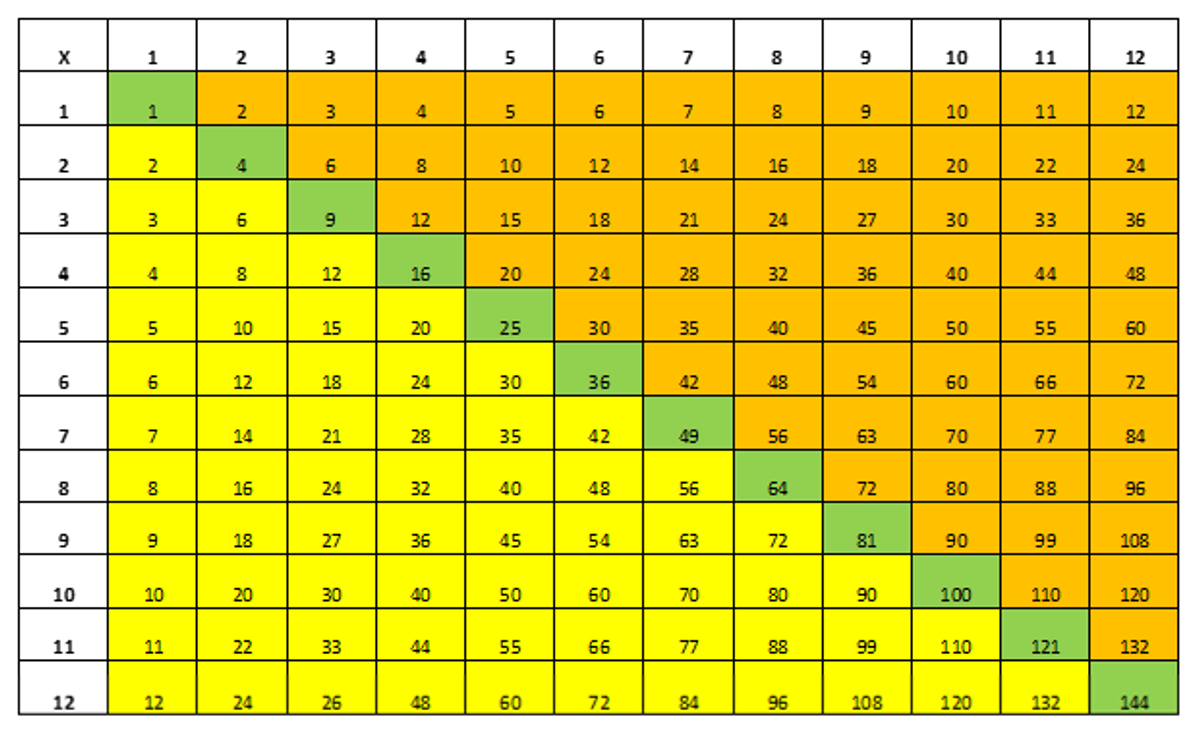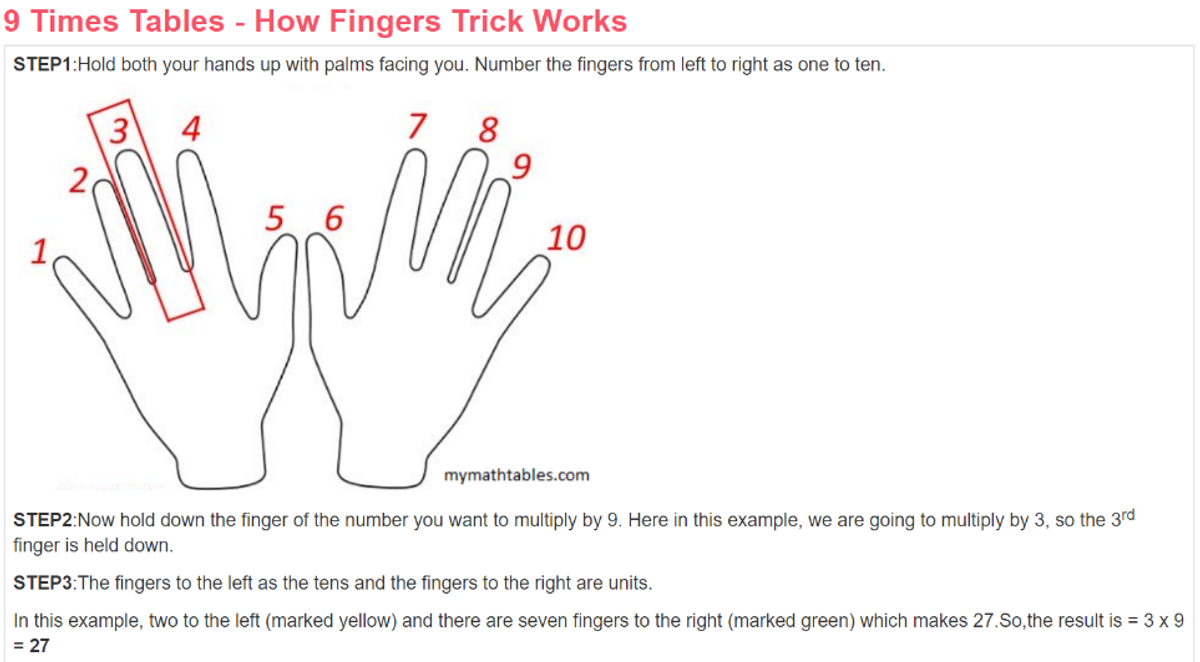Practising Times Tables!

Twin Facts and Commutative Law
Did you know that almost every multiplication has a twin apart from the times tables that make a squared number, such as 2x2 or 6x6?
Practising your times tables this way means you only have to really remember just over half of all the times tables answers to 12. Instead of learning 144 answers you only have to learn 78! This may even be lower as you may already know the answers to some of the easier ones like your 1, 2, 5 and 10 times tables.
For example, 8×2 and 2×8 both equal 16. So, it may be much easier to remember the 2×8 than 8×2.
Looking for Patterns
Start with 2, 5 and 10, as the patterns within them are easy to grasp. In the 2 and 10 times tables the numbers are all even. In fact, any number multiplied by an even number will be even. In the 10 times table all the numbers end in 0 and in the 5 times table all the numbers end in 5 or 0.
Move on to 4 and 8. The 4 times table are the answers to the 2 times table doubled: for example, 3 × 4 = 3 × 2 × 2. Likewise, the answers for the 8 times table are the answers to the 4 times table doubled: for example, 5 × 8 = 5 × 4 × 2.
The 3, 6 and 9 times tables, the digits of each answer add together to make 3, 6 or 9, or a multiple of those numbers. In the 9 times table there is a pattern in the tens and ones, with the tens increasing and the ones decreasing as you go up the times table.
Oral Activities
Songs, rhymes, raps and stories are all useful tools for helping to memorise multiplication facts.
Practical Activities
Regularly write out the times tables, in addition to saying them out loud. Make posters, collages, displays and other artwork that illustrates a particular times tables or group of times tables.
Games
Multiplication Bingo can be an easy game to create at home together. Also, using Mathletics, such as Live Mathletics to build speed and accuracy by competing against other students.
Tricks
The trick for finding the answers in the 9 times table, up to 9 × 9, whereby you use your fingers to demonstrate the changes in the tens and ones, as the illustration below demonstrates.
Please CLICK/TAP HERE for many more tricks to learn the other times tables!
Lauren Lowers & Sharon Demetriou
Numeracy Coordinators




